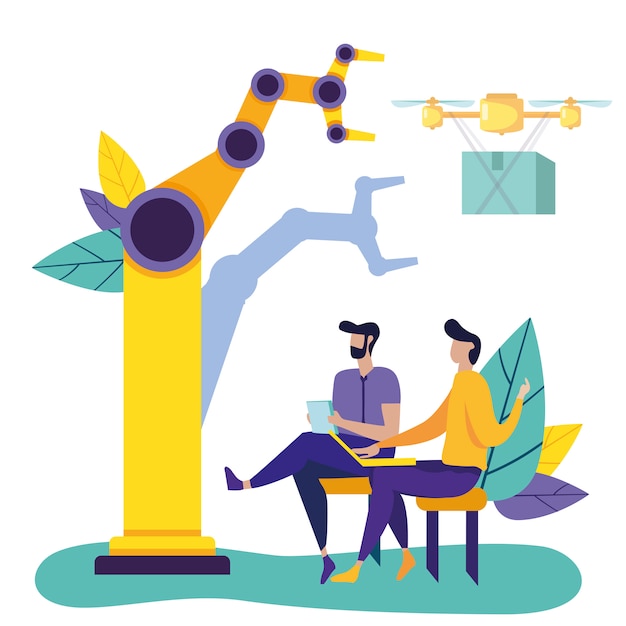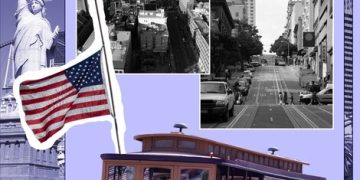2.1% GDP Growth: How It Impacts US Job Creation in 2025

The projected 2.1% GDP growth in the US for 2025 is anticipated to moderately stimulate job creation across various sectors, particularly in technology, healthcare, and construction, although some industries may experience slower growth or even contraction.
As the US economy navigates the complexities of the coming years, a projected 2.1% GDP growth in 2025 offers a glimpse into potential shifts in the job market. Understanding how the projected 2.1% GDP growth in 2025 will affect job creation in the US is crucial for businesses, job seekers, and policymakers alike. Let’s delve into the sectors that could thrive, the challenges that may arise, and the overall implications for employment across the nation.
Decoding the GDP Growth Projection for 2025
Economic forecasts are critical tools for understanding the potential trajectory of a nation’s economy. The projected 2.1% GDP growth for the U.S. in 2025 serves as a benchmark for assessing future economic health and its impact on various sectors. But what factors contribute to this forecast, and what does it really mean for the average American?
Key Factors Influencing the GDP Projection
Several elements combine to shape the GDP projection. These include consumer spending, business investment, government policies, and international trade. Each of these factors plays a significant role in determining whether the economy expands or contracts.
- Consumer Spending: A primary driver of economic growth, influenced by consumer confidence and disposable income.
- Business Investment: Companies investing in new equipment, technology, and infrastructure boosts productivity and creates jobs.
- Government Policies: Fiscal policies, such as tax cuts or increased government spending, can stimulate economic activity.
- International Trade: Exports contribute positively to GDP, while imports have a negative impact.
Understanding these factors helps to contextualize the 2.1% GDP growth projection and its potential effects on the job market.

Sectors Poised for Job Growth in 2025
The projected GDP growth is not uniformly distributed across all sectors. Some industries are better positioned to capitalize on economic expansion, leading to increased job creation. Identifying these sectors is key for both job seekers and businesses aiming to expand.
Technology Sector
The technology sector is expected to continue its robust growth, driven by innovation in areas such as artificial intelligence, cloud computing, and cybersecurity. This growth translates into numerous job opportunities.
Specifically, roles in software development, data analytics, and IT support are likely to see significant increases in demand. The need for skilled professionals in these areas will continue to outpace the supply, creating a competitive job market.
Healthcare Industry
The healthcare industry is another sector anticipated for sustained job growth. An aging population and advancements in medical technology are driving demand for healthcare services, leading to increased employment opportunities.
Jobs for nurses, medical assistants, and healthcare technicians are expected to rise. Additionally, administrative roles in healthcare facilities will also see growth as the industry expands to meet increasing patient needs.
Construction and Infrastructure
Investments in infrastructure projects and a rebounding housing market are expected to fuel job growth in the construction sector. As cities and states undertake large-scale projects, the demand for construction workers will increase.
- Construction Workers: General laborers, carpenters, and electricians will be in high demand.
- Engineers: Civil and structural engineers are needed to design and oversee infrastructure projects.
- Project Managers: Skilled project managers are essential for coordinating and completing construction projects on time and within budget.
These sectors are expected to be major contributors to job creation in 2025, driven by specific economic factors and industry trends.
Industries Facing Potential Challenges
While some sectors are poised for growth, others may face headwinds despite the overall GDP projection. Understanding these challenges is essential for workers and businesses in these industries.
Manufacturing Sector
The manufacturing sector may experience some fluctuations in job creation due to automation and global competition. While some manufacturing jobs will remain, many routine tasks are being automated, leading to potential job losses.
Companies are investing in robotics and AI to increase efficiency and reduce costs, which could result in fewer jobs for production workers. At the same time, there may be an increased need for skilled technicians to maintain and operate automated systems.
Retail Industry
The retail industry continues to evolve with the rise of e-commerce. Traditional brick-and-mortar stores are facing increased competition from online retailers, leading to store closures and job losses.
While online retail is creating new jobs in areas such as logistics and customer service, these gains may not offset the losses in traditional retail. Workers in retail sales and store management may need to adapt to the changing landscape by acquiring new skills.

The Role of Government Policies
Government policies play a crucial role in shaping the job market and influencing economic growth. Understanding how these policies are expected to evolve is vital for assessing their impact on job creation in 2025.
Fiscal Policies
Fiscal policies, such as tax cuts or government spending on infrastructure, can stimulate economic activity and create jobs. Tax cuts can lead to increased consumer spending and business investment, while infrastructure projects can directly create construction jobs.
Government investments in renewable energy and green technology can also create new jobs in these emerging sectors. Policies that support small businesses and entrepreneurship can lead to increased job creation as well.
Monetary Policies
Monetary policies, such as interest rate adjustments by the Federal Reserve, can influence borrowing costs and impact economic growth. Lower interest rates can encourage businesses to invest and hire, while higher rates can slow down economic activity.
- Interest Rates: Lowering interest rates can make it cheaper for businesses to borrow money, stimulating investment and job creation.
- Inflation Control: Maintaining stable inflation is crucial for a healthy economy and job market.
- Quantitative Easing: The Federal Reserve may use quantitative easing to inject liquidity into the economy and support growth.
Trade Policies
Trade policies can impact the competitiveness of U.S. businesses and influence job creation in various sectors. Trade agreements can open new markets for U.S. exports, leading to increased production and employment.
However, trade policies that restrict imports can also lead to higher prices for consumers and businesses, potentially impacting economic growth and job creation.
Education and Skills Training: Preparing for 2025
To capitalize on the opportunities presented by economic growth, it is essential for workers to have the right skills and education. Investments in education and skills training are crucial for preparing the workforce for the jobs of the future.
STEM Education
STEM (Science, Technology, Engineering, and Mathematics) education is particularly important for preparing workers for jobs in the technology sector. A strong foundation in these areas can open doors to numerous career opportunities.
Encouraging students to pursue STEM fields and providing access to quality STEM education can help close the skills gap and ensure that the U.S. remains competitive in the global economy.
Vocational Training
Vocational training programs can provide workers with the skills they need to succeed in specific industries, such as construction or manufacturing. These programs often offer hands-on training and apprenticeships, allowing workers to gain practical experience.
Investing in vocational training can help address the shortage of skilled workers in these industries and provide individuals with a pathway to well-paying jobs.
Lifelong Learning
Lifelong learning is becoming increasingly important as technology and industries evolve rapidly. Workers need to be able to adapt to new technologies and acquire new skills throughout their careers.
Online courses, workshops, and continuing education programs can provide workers with the opportunity to update their skills and stay competitive in the job market. Employers can also play a role by offering training and development opportunities to their employees.
Navigating the Job Market in 2025: Strategies for Success
The job market in 2025 will be shaped by a combination of economic growth, technological advancements, and evolving industry trends. To succeed in this environment, job seekers and businesses need to adopt proactive strategies.
For job seekers, this means focusing on in-demand skills, networking effectively, and being open to new opportunities. For businesses, it means investing in employee training, embracing innovation, and adapting to changing market conditions.
| Key Point | Brief Description |
|---|---|
| 📈 GDP Growth | Projected at 2.1% in 2025, influencing job creation across sectors. |
| 💻 Tech Sector | Expected to see significant job growth in areas like AI and cybersecurity. |
| 🏥 Healthcare | Driven by an aging population and advancements in medical technology. |
| 🛠️ Construction | Infrastructure projects and housing market rebound boost demand. |
Frequently Asked Questions
▼
GDP growth generally leads to increased business activity and investment, which in turn creates more job opportunities across various sectors.
▼
The technology, healthcare, and construction sectors are expected to benefit the most, with significant job growth in these areas.
▼
The manufacturing and retail industries may face challenges due to automation and competition from e-commerce, respectively.
▼
Government policies, such as fiscal, monetary, and trade policies, can significantly influence economic growth and job creation.
▼
Workers can prepare by focusing on STEM education, vocational training, and lifelong learning to acquire in-demand skills.
Conclusion
The projected 2.1% GDP growth in 2025 presents both opportunities and challenges for the US job market. While sectors like technology, healthcare, and construction are poised for growth, others may need to adapt to changing economic conditions. By understanding these trends and investing in the right skills and policies, both workers and businesses can navigate the future job landscape successfully.





